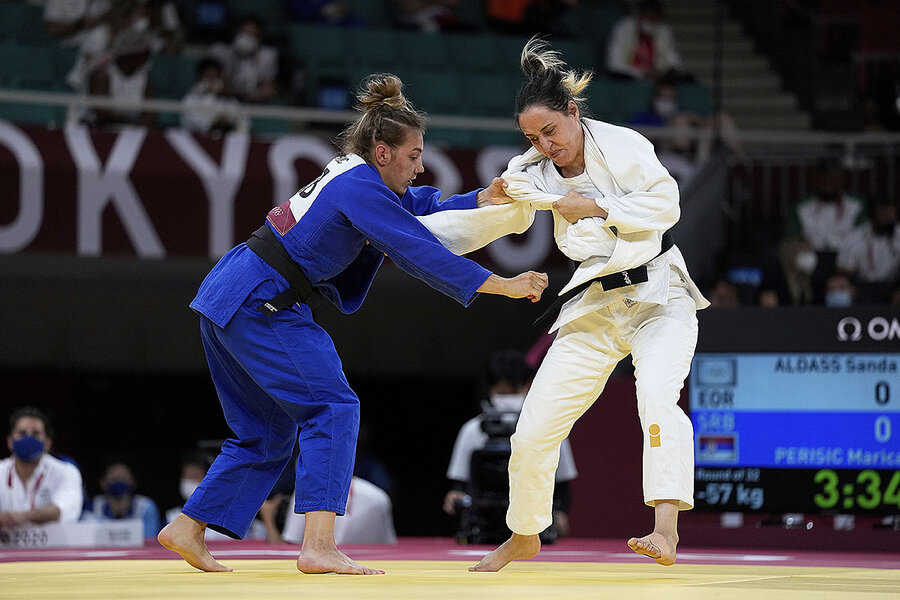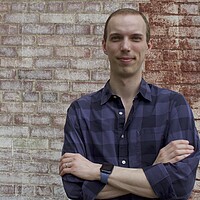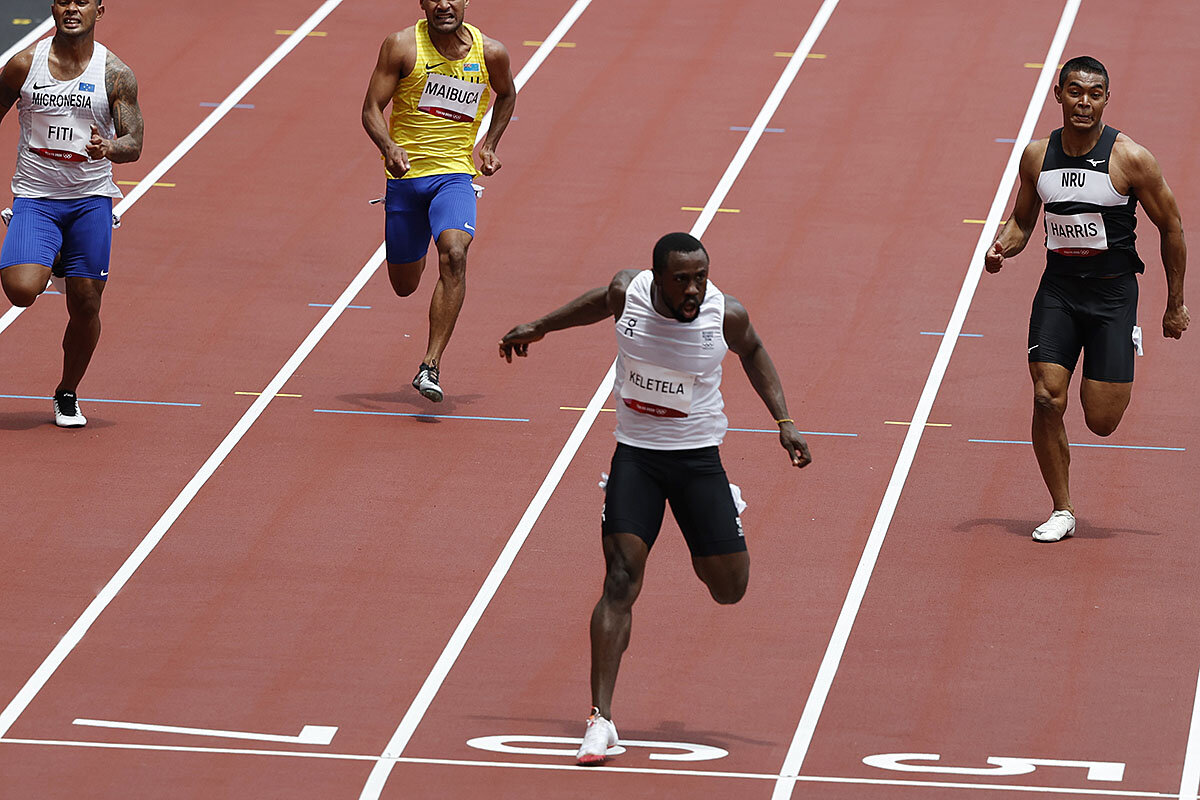The Refugee Olympic Team: 11 countries, 12 sports, and ‘a big heart’
Loading...
| Tokyo
For Sanda Aldass, the 10-by-10-meter judo mat has always felt like home. She started competing when she was 7 years old, and the sport became one of the most important parts of her life. For years she was a top member of Syria’s national judo team.
But after 2015, the sport didn’t have a home for her.
That year Ms. Aldass fled Damascus after her family’s house was destroyed during the Syrian civil war. She couldn’t compete for Syria, and she couldn’t compete for the Netherlands, her adopted country. Ms. Aldass was out of options.
Why We Wrote This
Being a refugee means “someone who’s not home,” one athlete says. She knows all too well, having fled Afghanistan. But the Olympics have helped refugees find a temporary home back on the playing field, and in each other.
That’s why earning a spot on the Refugee Olympic Team (EOR) this summer meant more than a chance to compete. It let her “represent every judoka who is a refugee in the world,” said Ms. Aldass, “to look at me and say, ‘If she can do it then I can do it.’”
Competing in Nippon Budokan, the sport’s spiritual home, judo experienced a homecoming of sorts in Tokyo. Judo originated in Japan in the 19th century and first entered the Olympics at the 1964 Tokyo Games, taking place in the same building.
For Ms. Aldass and the rest of the EOR, this year’s homecoming is more personal.
The second team to march during the opening ceremony, after perennial first Greece, the EOR has already become a cemented fixture at the Games. International Olympic Committee President Thomas Bach, a particular fan, met with the team at the Olympic Village this year. The IOC has already pledged the refugee team will return in 2024.
Finding a new home is paramount for people fleeing or displaced by their country. For refugee athletes in Tokyo – and the more than 80 million displaced people around the world – sport can facilitate that journey. The EOR’s individual athletes used a love of sport to lay new roots in their adopted countries. Collectively, they’ve done the same to find a home in the Olympics.
“Being a refugee – I would say that it’s someone who’s not home,” says Nigara Shaheen, Ms. Aldass’ teammate. “We all are not in our homes. That’s the struggle that we share.”
“That’s why we really feel like we are a family,” she adds.
Growing team
Since debuting in Rio de Janeiro in 2016, the EOR has almost tripled in size, from 10 to 29 athletes. This year, it more fully represents the diversity of refugees around the world, with athletes who hail from 11 countries of origin – from Iran to Eritrea to Venezuela – and compete in 12 sports, from badminton to boxing.
The IOC selected the team from a pool of 56 refugee athletes receiving scholarships that cover living and training expenses. This Refugee Athlete Support Program allows athletes to continue training after the Games, or supports them as they start a new career and rebuild their lives in a new country.
“Just the ability to interact and meet people and be able to learn and acquire new skills is something that helps these refugee athletes not only assimilate to new environments, but also to find a future,” says Andrea Mucino-Sanchez, a spokesperson for UNHCR, the United Nations refugee agency, which partners with the IOC to support the refugee team.
In judo the coed mixed team consisted of six members, originally from Syria, Congo, Afghanistan, and Iran. Training together for just one or two months and blending different cultures and languages can be difficult. Becoming a team begins with learning to trust one another.
“At the beginning [of training with the team] I was a little bit hesitant,” says Ms. Shaheen. “I was thinking, ‘How will my experience be?’ But we all share the same story.”
Compared with national teams, which often have superior facilities and funding, the EOR faces institutional disadvantages. Like Ms. Aldass, many of the team’s members once competed on their former countries’ national teams. But leaving a country behind also means the same for training and, potentially, institutional support. At the July 31 competition, the team lost in the first round to Germany.
Notwithstanding, many of the athletes were smiling afterward, hugging each other as they returned from the mat – understanding the challenges they’ve faced to get here. More broadly, even if they want to medal, they know their role in Tokyo is to build a competitive foundation as the team continues to grow.
“Next time we will come back stronger,” says Ms. Shaheen.
Next step, Paris?
Ms. Aldass is returning home to the Netherlands, where her three children and husband – who is also her coach – are waiting.
It’s often Syrian men who flee the country and seek refugee status, hoping to later reunite with their family. But Ms. Aldass went first in her family.
Escaping to the Netherlands, she lived in a refugee camp for nine months, including six months without her husband and then-3-year-old son. Exercise was a crucial outlet that helped her persevere – and still is.
“It was so difficult to start everything all over again, since we came here,” Ms. Aldass said in an IOC video during the Games. “But sport gave us [a] big motivation.”
Ms. Aldass says she hopes to return with the EOR at the 2024 Olympics in Paris. The team’s members will likely change, but its goal will remain the same: to be a symbol of hope for refugees, and show them they, too, can find a home. In achievement of that goal, the EOR’s character is as important as its results.
“Inside the refugee team, all the [members] have a big heart,” says teammate Javad Mahjoub.







